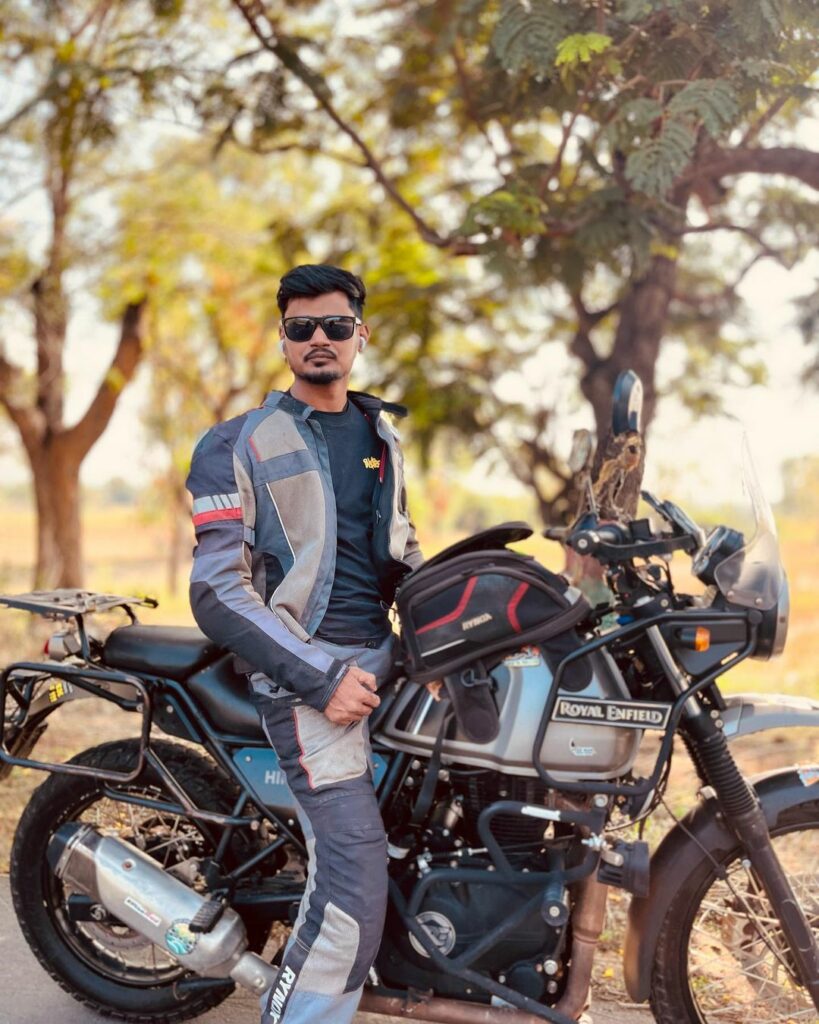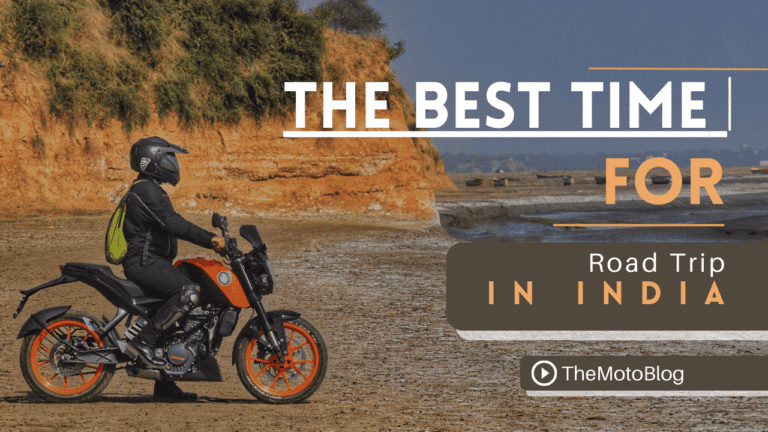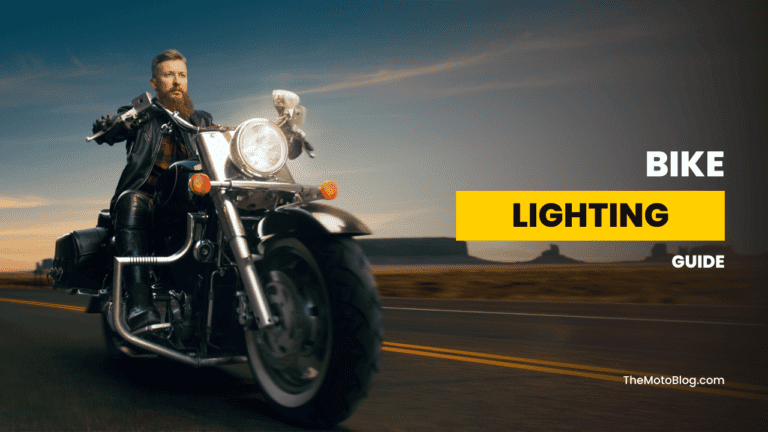DSLR Bike Photography: My Expert Guide to Stunning Shots
As a passionate photographer, I’m always eager to combine my love for capturing moments with my enthusiasm for biking. DSLR bike photography offers an excellent opportunity for photographers to explore this unique niche, as it allows you to showcase stunning landscapes, dynamic action shots, and the pure enjoyment of cycling.
To excel in this field, mastering various techniques can significantly enhance the quality of your photos. In this article, I’ll share my top tips and tricks for capturing those perfect shots that truly reflect the thrill of biking adventures. From choosing the right gear to understanding the nuances of composition, we’ll dive into the essential aspects of DSLR bike photography.
By fine-tuning your skills and incorporating these practical suggestions, you’ll transform your photography game and capture captivating images of cyclists in motion. Join me as we venture into the world of DSLR bike photography and discover how to make your photos stand out from the rest.
Equip Yourself: Must-Have Gear for DSLR Bike Photography
DSLR bike photography offers a unique and thrilling way to capture the beauty of cycling. To get those perfect shots, you’ll need the right equipment. In this section, I’ll discuss the essential gear you need for successful DSLR bike photography.
A high-quality DSLR camera is a must, for getting the best cycling images. Look for one with fast auto-focus and a continuous shooting mode, as these features will help capture fast-moving cyclists. Consider investing in a weather-sealed camera to protect your gear from potential rain or dirt during your photography sessions.
Here are a few essential items for your DSLR bike photography kit:
- Lenses: Different lenses serve distinct purposes in your photography. A wide-angle lens (14-24mm) helps capture a broader scope for action shots, while a telephoto lens (70-200mm) is excellent for isolating and focusing on specific riders. A standard lens (24-70mm) is versatile for various shooting scenarios.
- Camera Bag: A sturdy camera bag is essential for protecting your camera and lenses. Look for one with padded compartments, weatherproofing, and easy access to your gear.
- Tripod: Using a portable and lightweight tripod can help you stabilize your camera for sharp photos. Some tripods can even be attached to the bike frame for versatile and unique perspectives.
- Remote shutter release: With a remote release, you can easily take photos without touching the camera, reducing camera shake for sharper images.
- Filters: Ultraviolet (UV) filters protect your lens’s front elements and cut through haze, while polarizing filters help reduce glare and intensify colors in your shots. Neutral density (ND) filters are useful for controlling exposure in bright conditions.
- Spare batteries and memory cards: Taking plenty of photos means you’ll need extra power and storage. Always have a spare battery and memory card handy to avoid any interruptions during your shoot.
In addition to these essential items, consider the following accessories that can enhance your DSLR bike photography experience:
- Lens hood: A lens hood prevents unwanted light from entering your lens, reducing lens flare and improving image quality.
- Cleaning supplies: Keep your lenses and camera body clean with a blower brush, microfiber cloth, and cleaning solution.
- Straps or harness: A camera strap or harness helps you comfortably secure your camera while on the move.
Remember to experiment with these must-have gear items, and tailor them to your specific needs and preferences. With the right equipment, you’ll be well-equipped to capture breathtaking images in the world of DSLR bike photography.
Getting the Perfect Frame: DSLR Camera Settings
When it comes to DSLR bike photography, capturing those stunning shots can be as rewarding as cruising along the winding roads. To take your photography skills to the next level, it’s essential to understand the importance of DSLR camera settings. In this section, I’ll cover some handy tips and tricks to help you achieve the perfect frame when snapping those breathtaking moments.
To begin with, adjusting your shutter speed plays a crucial role in maintaining sharp images when photographing fast-moving subjects like cyclists. Consider boosting your shutter speed to 1/1000th of a second or faster to freeze the action in time. In low-light conditions, you may need to decrease the shutter speed and use a tripod or monopod to avoid camera shake.
Next, let’s discuss aperture. For DSLR bike photography, it’s advisable to use a wide aperture (lower f-stop number) to create a shallow depth of field. This will ensure that your cyclist remains in focus while blurring the background. Here are some suggested f-stop numbers for creating the desired effect:
| F-stop | Depth of Field |
|---|---|
| f/2.8 | Shallow |
| f/4 | Moderate |
| f/5.6 | Wide |
ISO settings are important too, as they bolster your camera’s sensitivity to light. For daylight photography, I’d recommend an ISO range of 100-400. If you’re shooting in the early morning or evening, you may want to increase the ISO to 800 or even 1600 to compensate for the lower light conditions. However, be aware that higher ISO settings can result in increased noise and graininess in your images.
When it comes to focusing, using continuous autofocus (AF-C) will help you capture sharp images while tracking fast-moving subjects. Enable this feature in your camera’s settings and select a single focus point, allowing you to control where the camera will focus on your subject.
Finally, here are some extra tips to consider:
- Turn on burst mode for continuous shooting – capturing multiple shots per second increases your chances of snapping a perfect moment.
- Utilize a telephoto lens – this will allow you to shoot from a distance while still capturing detailed images of your subject.
- Experiment with different camera angles – try shooting from the side, in front, or overhead to make your DSLR bike photography truly unique.
Mastering Various Angles and Perspectives
When it comes to DSLR Bike Photography, one of the most significant ways to enhance your shots is by experimenting with different angles and perspectives. In this section, I’ll dive into the importance of getting creative with viewpoints, and offer some suggestions on how to achieve captivating images on your biking adventures.
One of the first tips I’d recommend is to get down low. By positioning your camera at a lower angle, you can create an illusion of speed or emphasize the biker’s power. It’s also an excellent way to showcase the bike’s components and create a more dramatic image.
Another perspective to try is the bird’s eye view. Capturing your subject from above adds depth and a sense of scale to your photographs. Use a drone, a tall structure, or simply stand on a higher vantage point to snap a bird’s eye shot. Mix it up by capturing both close-ups and wider views of the surrounding landscape.
Taking advantage of leading lines can make your DSLR Bike Photography more visually striking. Look for trails, fences, or natural formations like trees to frame the rider and guide a viewer’s eye towards your subject. This technique can help you create dynamic compositions that keep your audience engaged.
Consider the following techniques in your quest for unique angles and perspectives:
- Panning shots: These involve moving the camera to follow the biker, creating a sense of motion in the background while keeping the subject sharp. They can be challenging to execute but are sure to make your images stand out.
- Silhouettes: To capture a silhouette, position yourself so that the light source (preferably the sun) is behind your subject. This technique works best during sunrise or sunset, when the light is low and yields stunning colors.
- Reflections: Use water, mirrors, or reflective surfaces to create interesting visuals in your DSLR Bike Photography. They can add depth and symmetry to your images, or even help you create an artistic, abstract look.
Incorporating these approaches when capturing your biking adventures will result in more dynamic and interesting photographs. Keep in mind that practice and experimentation are the keys to succeeding. So, grab your DSLR, hop on your bike, and let your creative spirit guide you to new angles and perspectives. Happy shooting!
Expert Techniques for Action-Packed Shots
Capturing stunning action shots in DSLR bike photography can be a challenging yet rewarding experience. As a seasoned photographer, I’ve learned some valuable techniques that can help elevate your bike photography to the next level. Here, I’ll share my insights, focusing on these critical factors:
- Shutter Priority Mode
- Focusing Modes
- Panning
Shutter Priority Mode is your best friend when it comes to capturing fast-moving subjects like cyclists. By prioritizing shutter speed, you can freeze action or introduce intentional motion blur to convey a sense of speed. A quick guideline for shutter speeds (in seconds) to experiment with:
| Purpose | Shutter Speed |
|---|---|
| Freeze action | 1/1000 – 1/4000 |
| Slight blur | 1/500 – 1/1000 |
| Panning | 1/100 – 1/500 |
Keep in mind that you might need to adjust ISO and aperture accordingly to maintain the correct exposure.
Next up is Focusing Modes. In DSLR bike photography, the ideal setting is Continuous Autofocus (AI Servo for Canon, AF-C for Nikon). This mode lets your camera track the subject as it moves, ensuring sharp images. Additionally, consider using an AF area mode such as Dynamic (for Nikon) or Zone (for Canon) to provide more accuracy in choosing which focus points the camera should prioritize.
Panning, a technique that involves following the subject with the camera while shooting, can be instrumental in adding a sense of motion to your bike photography. Here are some useful tips for successful panning:
- Start with a shutter speed of 1/100 to 1/200, and adjust accordingly depending on the scene and lighting.
- To ensure a smooth pan, keep your feet shoulder-width apart and rotate at the hips, following the subject.
- Use a focus mode like Continuous Autofocus to track the subject during the pan.
- Take multiple shots as you pan – this will increase the chances of getting that perfect shot.
By combining these techniques and mastering their application, you’ll become more adept at capturing the excitement and thrill of DSLR bike photography. So don’t be afraid to experiment and test your limits, because that’s precisely where the most memorable images are captured.
Understanding the Importance of Lighting
When it comes to DSLR Bike Photography, one essential element that can make or break your shots is the importance of lighting. Proper lighting can transform your photos from ordinary to extraordinary, enhancing the overall quality and capturing the true essence of the moment.
One significant aspect of lighting in DSLR Bike Photography is the source of light. There are two primary sources of light to consider:
- Natural light
- Artificial light
Natural light, such as the sun, offers many advantages, especially during the golden hours of sunrise and sunset. These periods provide soft, warm, and more evenly distributed lighting, which highlights your bike and the setting perfectly.
On the other hand, artificial light allows you to have more control over the intensity, direction, and color of light in your pictures. Using tools like flashes, reflectors, and diffusers can create unique, stylized photos of your bike.
Another important aspect in lighting is the quality of light. It can have a significant impact on the mood and aesthetic of your photos. There are two types of light quality to consider:
- Soft Light
- Hard Light
| Quality of Light | Characteristics |
|---|---|
| Soft Light | Diffused, fewer shadows, lower contrast |
| Hard Light | Direct, intense, sharp shadows, higher contrast |
Soft light creates a natural, soothing look that adds depth to your photos. It’s ideal for capturing bike details or creating a more intimate feel. Conversely, hard light adds drama and intensity, highlighting the bike’s ruggedness and showcasing action-packed moments on the trail.
The direction of light is also a critical factor in DSLR Bike Photography. Playing with different angles of light can introduce new perspectives and emphasize specific aspects of your bike or the surroundings. Keep these three directions in mind:
- Frontal lighting
- Backlighting
- Side lighting
- Frontal lighting is the most straightforward option, illuminating the subject head-on, resulting in even exposure and fewer shadows. However, the lack of shadows might lead to a more “flat” appearance.
- Backlighting can create stunning silhouettes and emphasize the bike’s shape against a bright background. This technique requires careful exposure settings to avoid overexposing the background or underexposing the subject.
- Side lighting adds texture and depth to your images by casting shadows on one side of your bike while emphasizing the details on the other side. This technique is perfect for highlighting specific features and capturing the bike’s true character.
In summary, incorporating the proper source, quality, and direction of light can drastically improve your DSLR Bike Photography. Experimenting with these factors will lead you to create visually stunning shots that truly capture the essence of your biking adventures.
The Art of Composition: Arranging Your Subjects
When it comes to DSLR bike photography, mastering the art of composition is essential for capturing great shots. I’ve learned that arranging subjects effectively can make a significant difference in the final outcome. In this section, let’s delve into some crucial tips and tricks to create compelling compositions.
One essential aspect of composition that I’ve found useful is utilizing the rule of thirds. This technique involves dividing an image into nine equal squares with two horizontal and two vertical lines. Placing the main subject or point of interest along these lines or their intersections creates a well-balanced and aesthetically pleasing result. When photographing bikes, this could mean positioning them close to one of the intersections or aligning the horizon with one of the horizontal lines.
Another tip to consider when composing your shots for DSLR bike photography is using leading lines effectively. These lines could be anything from roads or paths to railings or fences. They guide the viewer’s eye through the image and create a sense of depth. By incorporating leading lines, you can emphasize the bike and create a stronger connection between the subject and its surroundings.
Don’t forget about the importance of considering backgrounds and foregrounds. In bike photography, a cluttered background can quickly distract from the main subject, while a carefully chosen foreground can help add context and depth. To accentuate the bike, consider the following:
- Minimizing distractions in the background
- Using depth of field to blur the background
- Incorporating a foreground element that complements the subject
Lastly, when it comes to DSLR bike photography, it’s crucial to experiment with different perspectives. While it might be tempting to stick with a standard eye-level viewpoint, getting creative with angles can result in truly unique and engaging compositions. Don’t be afraid to go low, high, or even shoot from unusual vantage points like rooftops or bridges. By exploring different perspectives, you’ll discover captivating ways to showcase your subject.
By incorporating these tips and tricks into your DSLR bike photography, I’m confident you’ll see impressive results in the compositions of your shots. Remember, practice makes perfect; the more you experiment with composition, the better you’ll become at arranging your subjects for striking and memorable images.
Capturing the Essence of Movement and Speed
To truly showcase the exhilaration and energy of DSLR bike photography, it’s essential to capture the essence of movement and speed. In this section, I’ll share some useful techniques and tips to help you create stunning images that convey motion and velocity.
First, it’s important to choose the best shutter speed for the job. When photographing fast-moving subjects like bicycles, you’ll want to experiment with shutter speeds to find the sweet spot between freezing movement and conveying a sense of speed. Typically, this will fall within the range of 1/125s to 1/500s. Higher shutter speeds will freeze action, while slower speeds will introduce motion blur, which can be used creatively to emphasize speed.
Another great technique for capturing movement is panning. This involves tracking the motion of the cyclist with your camera, keeping the subject sharp while allowing the background to blur due to the camera’s movement. To achieve this effect:
- Set your camera to a slower shutter speed, such as 1/30s or 1/60s.
- Choose continuous shooting mode and autofocus tracking.
- Follow the rider with your camera, keeping them in the same spot within the frame.
- Release the shutter as they pass by, continuing to move your camera along with their motion.
Patience and practice are key when trying to perfect panning, so don’t be discouraged if the technique takes time to master.
Capturing the essence of speed can also be achieved by changing your perspective. Shooting from a low angle, for example, can create a sense of drama and emphasize the cyclist’s speed as they zoom past. Additionally, try placing your camera close to the ground and angling it upwards to create a dynamic, larger-than-life effect.
To really push the boundaries of your DSLR bike photography, consider experimenting with composite images. By capturing several frames of a rider in motion and combining them in post-processing, you can create an artistic representation of speed and movement. To create a successful composite image:
- Plan your shots and location carefully.
- Shoot a series of images capturing the cyclist at different stages of motion.
- Use photo-editing software to layer and blend images into a cohesive, dynamic scene.
By employing these techniques and a bit of creativity, you’ll be well on your way to capturing stunning DSLR bike photographs that showcase movement and speed. Remember, practice makes perfect – so keep experimenting and pushing the limits of your craft.
Experimenting with Different Styles and Genres
When it comes to DSLR Bike Photography, I can’t emphasize enough the importance of experimenting with different styles and genres. By diversifying my approach, I can continually hone my skills and enhance my creative eye, all while capturing breathtaking images of my cycling subjects. In this section, I’ll briefly discuss some of the styles and genres worth exploring when perfecting your DSLR Bike Photography technique.
First, let’s consider action shots. Capturing cyclists in motion can be thrilling and challenging, but when done right, the results are stunning. To effectively shoot action shots, I recommend:
- Using a fast shutter speed to freeze the action
- Employing a continuous drive mode to take multiple shots quickly
- Manually focusing to ensure sharpness in the cyclist’s movement
Another genre that’s well-suited for DSLR Bike Photography is street photography. Capturing cycling culture in an urban setting provides an interesting and unique backdrop. For this genre, I typically explore:
- Wide-angle lenses to capture more of the scene
- Candid shots, showcasing the authenticity of cyclists in their natural habitat
- Observing the play of light and shadow on my subjects and surroundings
Landscape photography is another wonderful genre to consider when capturing scenes that include cyclists against the backdrop of scenic routes. Here are some tips for enhancing your landscape-oriented bike photos:
- Utilizing a tripod for stability and to minimize blur at slower shutter speeds
- Reaching the location during the golden hour for optimal lighting
- Experimenting with perspectives, placing the cyclist off-center to add depth
Lastly, don’t shy away from trying out abstract or artistic photography. This genre allows me to think outside the box and create unconventional images that showcase my personal vision. Some creative approaches to experiment with include:
- Selective focus to draw attention to specific details or textures
- Intentional camera movement to create motion blur
- Playing with colors, contrast, and exposure during post-processing
By exploring these diverse styles and genres, I can continually evolve as a photographer, expand my skillset, and create an array of visually stunning images that truly capture the essence of DSLR Bike Photography. So, don’t be afraid to step outside your comfort zone and immerse yourself in new adventures – your camera, your expertise, and your vision are your greatest assets in this journey!
Post-Processing: Enhancing Your Images
When it comes to DSLR bike photography, capturing the perfect shot is just the beginning. To truly make your images stand out, post-processing plays a crucial role. In this section, I’ll share some tips and tricks to help you enhance your bike photos during the editing process.
To start, let’s discuss some essential editing tools that can elevate your DSLR bike photography:
- Adobe Lightroom: This software is perfect for organizing your photos and making adjustments to color, exposure, and contrast.
- Adobe Photoshop: For more advanced edits, Photoshop offers tools for retouching, adding creative effects, and refining details.
- Snapseed: For mobile photographers, this app provides powerful editing options on-the-go.
Now that we’ve covered the tools, let’s delve into the techniques to enhance your images:
- Crop and straighten: Sometimes, our photos may end up a little crooked or have unwanted elements in the frame. By cropping and straightening, you can remove distractions and improve the overall composition.
- Adjust exposure: It’s essential to ensure your bike photos have proper exposure. You can adjust the brightness, shadows, and highlights to create a more balanced image.
- Enhance colors: Boosting the vibrancy and saturation of your photos can make the colors really pop. Be careful not to go overboard, though, as too much saturation can result in unnatural-looking images.
- Sharpen: Sharpening your DSLR bike photography helps bring out the details in your images. But, again, it’s important not to overdo it to avoid graininess and noise.
- Vignetting: Adding a subtle vignette can draw the viewer’s attention towards the center of the image, which is especially useful when the bike or cyclist is the main subject.
- Remove imperfections: Finally, use tools like the spot healing brush in Photoshop to remove any distracting elements, such as dirt, dust spots, or minor blemishes.
Here are some additional tips for post-processing your DSLR bike photos:
- Shoot in RAW: If possible, always shoot in RAW format. This gives you more flexibility and control during the editing process, as you have access to more information and image data.
- Preserve details: While enhancing your images, be mindful of preserving important details, like the textures on the bike frame and the rider’s facial expressions.
- Experiment with presets: Using presets can be a great way to streamline your editing workflow and discover new creative styles.
By applying these post-processing techniques, you’ll be well on your way to creating eye-catching and professional-looking DSLR bike photography. Happy editing!
Conclusion: Improve Your DSLR Bike Photography Skills
Throughout this article, I’ve shared valuable tips and tricks to help you elevate your DSLR bike photography game. It’s time now to put all of this knowledge into practice and see the results for yourself. Remember, practice makes perfect, so don’t shy away from experimenting and refining your technique.
In DSLR bike photography, it’s essential to:
- Familiarize yourself with your equipment
- Understand the importance of composition
- Pay attention to lighting and colors
- Capture movement and freeze action effectively
- Post-process images to enhance their quality
Armed with these expert tips, you’ll find yourself taking stunning bike photos while telling engaging stories through your lens. Stay patient, keep practicing, and you’ll see steady improvement in your work.
Don’t forget to use the resources and tools available to photographers today. By leveraging photo editing software, participating in photography communities, and learning from other experts, you’ll develop your own unique style and build a strong portfolio that showcases your talent.
So, what are you waiting for? Grab your DSLR camera, hop on your bike and start capturing those thrilling moments. Soon, you’ll be proudly sharing your incredible bike photography with the world. Happy clicking!
If you liked this article, then please subscribe to our YouTube Channel for more Bike Videos. You can also find us on Instagram, Twitter and Facebook.
Disclosure: As an Amazon Associate, I earn from qualifying purchases. Read more about Amazon Affiliate Disclaimer.

Vishwanath Mathpati
I am Vishwanath Mathpati, a full-time Blogger and Motorcyclist from Bidar, Karnataka. I love writing about my Motorcycles Stories and Riding Gears on this blog.
Know More About Me.






